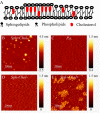Membrane sphingolipids as essential molecular signals for Bacteroides survival in the intestine
- PMID: 20855611
- PMCID: PMC3063596
- DOI: 10.1073/pnas.1001501107
Membrane sphingolipids as essential molecular signals for Bacteroides survival in the intestine
Abstract
As predominant intestinal symbiotic bacteria, Bacteroides are essential in maintaining the health of the normal mammalian host; in return, the host provides a niche with plentiful nutrients for the symbionts. However, the intestinal environment is replete with chemical, physical, and biological challenges that require mechanisms for prompt and adept sensing of and responses to stress if the bacteria are to survive. Herein we propose that to persist in the intestine Bacteroides take advantage of their unusual bacterial sphingolipids to mediate signaling pathways previously known to be available only to higher organisms. Sphingolipids convey diverse signal transduction and stress response pathways and have profound physiological impacts demonstrated in a variety of eukaryotic cell types. We propose a mechanism by which the formation of specific sphingolipid membrane microdomains initiates signaling cascades that facilitate survival strategies within the bacteria. Our preliminary data suggest that sphingolipid signaling plays an important role in Bacteroides physiology, enabling these bacteria to persist in the intestine and to perform other functions related to symbiosis.
Conflict of interest statement
The authors declare no conflict of interest.
Figures





References
-
- Sonnenburg JL, et al. Glycan foraging in vivo by an intestine-adapted bacterial symbiont. Science. 2005;307:1955–1959. - PubMed
-
- Krinos CM, et al. Extensive surface diversity of a commensal microorganism by multiple DNA inversions. Nature. 2001;414:555–558. - PubMed
-
- Cerdeño-Tárraga AM, et al. Extensive DNA inversions in the B. fragilis genome control variable gene expression. Science. 2005;307:1463–1465. - PubMed
-
- Coyne MJ, Reinap B, Lee MM, Comstock LE. Human symbionts use a host-like pathway for surface fucosylation. Science. 2005;307:1778–1781. - PubMed
-
- Kato M, Muto Y, Tanaka-Bandoh K, Watanabe K, Ueno K. Sphingolipid composition in Bacteroides species. Anaerobe. 1995;1:135–139. - PubMed
Publication types
MeSH terms
Substances
LinkOut - more resources
Full Text Sources
Other Literature Sources
Molecular Biology Databases
Research Materials

